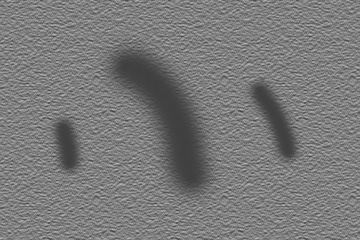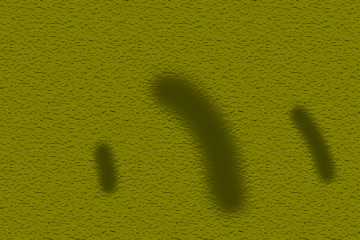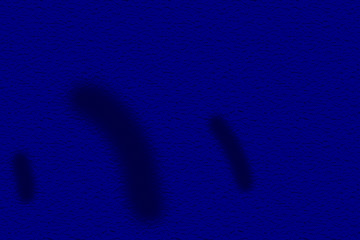 (Untitled) Ekphrasis
(Untitled) EkphrasisHome > Essays > Untitled essay about artwork titles
 (Untitled) Ekphrasis
(Untitled) EkphrasisThe other day I was looking at the semi-permanent collection of a certain gallery, consisting of works that are about on the same level as artwork that has sold at that gallery, but which, for some inexplicable reason, have not sold. A certain artist, we'll call him "Michael Smith," had four pieces, all of which had titles starting with "(Untitled)" and three of them had an actual title after that!
It's not hard to come up with examples of this. That same day, when I got home, quite by coincidence I pulled up a work list for an art exhibit a couple of years ago. One of the pieces, sure enough, was titled (Untitled) Ekphrasis. I can't remember what that looked like, but I can tell you it's not the same as the (Untitled) Ekphrasis on this very same page.
 (Untitled) Of profound thoughts
(Untitled) Of profound thoughtsIs this supposed to be some kind of clever commentary on the state of modern art today? And what the hell is ekphrasis anyway? "A literary description of or commentary on a visual work of art," Merriam-Webster tells us.
So maybe these words you're reading are the actual ekphrasis on this page, and not the gray "painting" by the upper left corner (to be charitable). "Ekphrasis" is a word more likely to come up in a spelling bee than in normal, everyday conversation, and you're probably not going to find it in a paper dictionary (unless it's one of those big, unabridged hardcover dictionaries).
It's not the most important problem artists face, but it is a problem that artists have to deal with on a more or less regular basis: what to call a newly finished drawing, photograph, painting or sculpture? On the one hand, you don't want to look like you spent more time on the title than on the artwork. With just "(Untitled)," you give the impression that you spent no time at all on the title.
But if then you add even just one word after that, you have crossed over from artist to pretentious douchebag. I'm not advocating that you title everything just "(Untitled)," as that can lead to a lot of confusion for everyone concerned, from the gallery staff, to critics, and potentially to buyers.
 (Untitled) What if the?
(Untitled) What if the?What I'm calling for is simple titles. If you paint a bowl a fruit, then why not just call it A Bowl of Fruit? If you paint three bowls of fruit, maybe you can call use the same title for all them with a number at the end. That would still be better than forcing everyone to find some alternative means of distinguishing one piece from another.
I have to admit that this advice is perhaps easier for photographers and figurative painters than it is for abstract painters. But either way, you might still have your smart-alecks. When I curated the Laerrus show at the 4731, I told the photographers "If you don't come up with a title for your photo, I will." (The show did include one painter, Kelly Guillory, who titled her painting simply Michelle).
One of the photographers being considered for the show came up with all sorts of pseudo-clever ways around this, like This Photo Doesn't Have a Title. But in the end, it was all moot, as he did not deliver anything for the show. The artists that did deliver may not have had the perfect titles, but at least they did have titles that help viewers reference the artwork and distinguish it from whatever else is on the wall.
 (Untitled)
(Untitled)And really, that's all a title needs to do. A title doesn't need to leave room for the viewer to interpret the artwork, because an excessively open-ended title can instead cause the viewer to altogether miss the point. Nor should a title make the viewer feel stupid by suggesting there is more to the artwork, something more that he missed, or could not comprehend, especially when there is actually less to the artwork.
Obscure words pulled from the unabridged dictionary, willful grammatical incompleteness ("noun phrases" exempted), evoking concepts that are radically different from what a normal person would understand in the image, attempts at humor, deliberate logical contradictions, these are all things to be avoided in titles. Creating tension between the artwork and its title is usually a lose-lose proposition for all concerned.
In summary, a title should be simple, direct and inobtrusive.
Anything more than that and the artist should perhaps instead consider a career in words rather than images.
 (Untitled) Of after and yesterday
(Untitled) Of after and yesterday